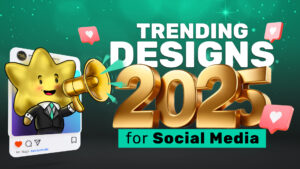In today’s digital landscape, your website is often the first impression your audience will have of your business. Whether you’re a creative agency, an eCommerce store, or a corporate brand, your web design is crucial for establishing credibility and driving conversions. With a well-designed website, you can create an intuitive and visually stunning digital experience that resonates with users and keeps them coming back for more. In this article, we’ll explore top website design ideas, examples, and principles, plus common pitfalls to avoid.
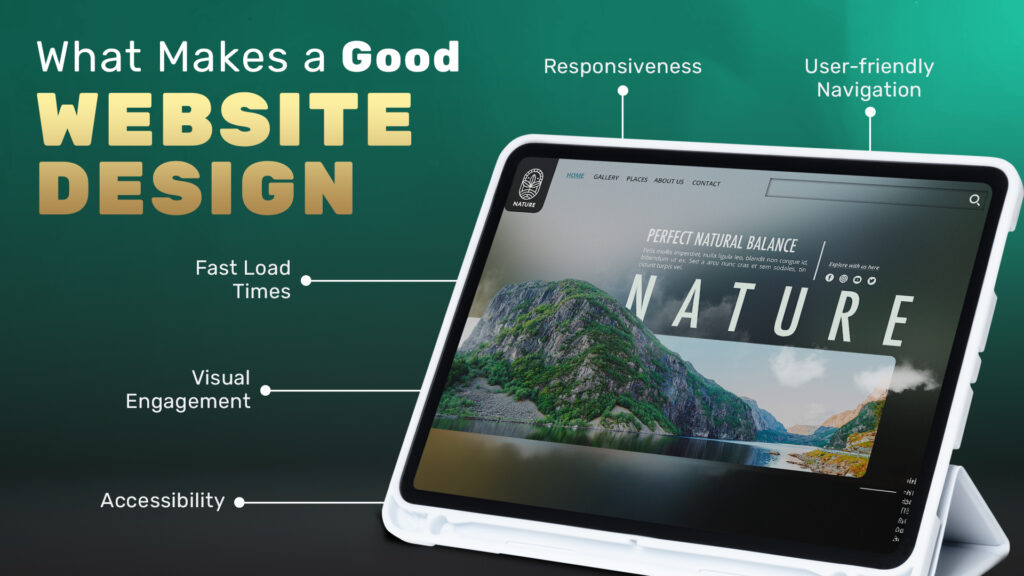
What Makes a Good Website Design?
Creating a good website design is about finding the perfect balance between aesthetics and usability. Your website should not only look beautiful but also function seamlessly. A good design ensures that users can navigate your site effortlessly, interact with content, and find what they’re looking for quickly. Below are the core characteristics of a well-designed website:
- User-friendly Navigation: Simplified navigation enhances the user experience by making it easy for visitors to find key information. Clear menu structures, breadcrumb trails, and search functionalities can all contribute to a more intuitive browsing experience.
- Responsiveness: With mobile traffic accounting for a significant portion of website visits, responsive design is non-negotiable. Your site should automatically adapt to various screen sizes without sacrificing functionality or design quality.
- Fast Load Times: A slow website is a surefire way to lose visitors. Optimized images, efficient coding, and good hosting can help keep your page loading time under the ideal threshold of 2 seconds, a critical factor for SEO rankings and user satisfaction.
- Visual Engagement: High-quality visuals and animations can engage users and enhance your brand message. It’s essential, however, to strike the right balance between visuals and content to avoid overwhelming visitors.
- Accessibility: Make sure your website is inclusive by considering accessibility standards, such as providing alt text for images, using legible fonts, and ensuring sufficient contrast for readability. Catering to users with disabilities, such as those who rely on screen readers, will widen your reach and comply with modern accessibility regulations.
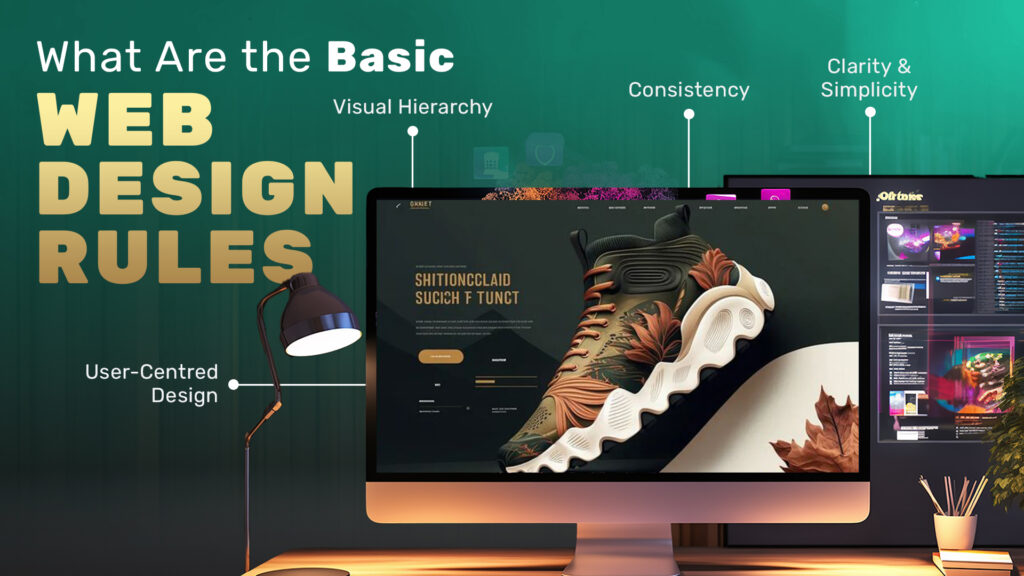
What Are the Basic Web Design Rules?
Certain foundational principles guide the design of every successful website. Following these can help you create a digital experience that is both functional and visually appealing. Let’s delve into four essential web design rules:
Clarity and Simplicity
A clean, minimal design ensures that visitors can easily navigate through your site without distraction. Overloading your pages with too many elements can lead to confusion. Instead, use a simple layout that guides the user’s focus toward the most important sections, like your call-to-action buttons or contact information.
Consistency
Design consistency ensures that your website looks cohesive. Using the same font styles, color schemes, and button designs across all pages builds familiarity and trust with your users. It’s crucial that this consistency extends to interactive elements such as hover effects or animations, providing a uniform experience no matter where users navigate.
Visual Hierarchy
Visual hierarchy is the arrangement of elements in order of importance. By playing with size, color, and position, you can highlight the most critical information on each page. For example, placing your call-to-action buttons in prominent locations or making headlines larger will draw more attention to these essential elements.
User-Centered Design
Your website should prioritize the user’s journey from start to finish. A user-centered design focuses on understanding the needs, behaviors, and limitations of your audience. Conducting usability tests and gathering feedback during the design process will help ensure that your website aligns with the expectations of its users.
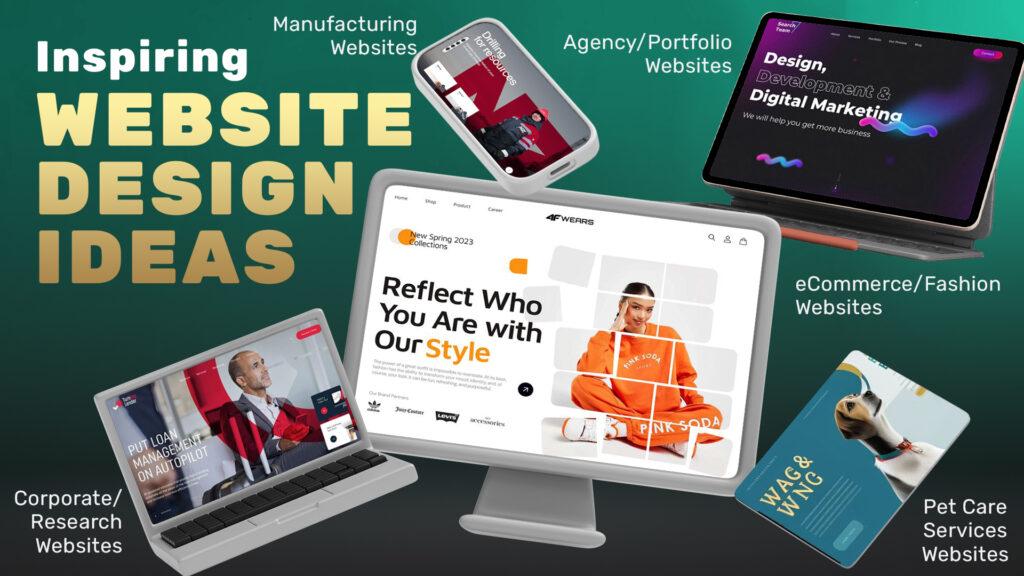
Inspiring Website Design Ideas
If you’re seeking inspiration for your next website project, the following website design ideas, organized by niche, can guide you in creating visually compelling and highly functional digital spaces.
Agency/Portfolio Websites
Creative professionals often rely on websites to showcase their work. Use bold visuals, minimal text, and smooth animations to present your projects. High-quality images and dynamic typography can effectively capture attention. Smooth scroll animations add an extra layer of engagement without overwhelming the user.
Pet Care Services Websites
Pet care websites benefit from a warm and welcoming design. Incorporate playful visuals of pets and soft color schemes to evoke trust and comfort. Essential features include easy-to-access service listings, online appointment booking options, and client testimonials to build credibility.
eCommerce/Fashion Websites
Fashion and eCommerce sites rely heavily on visuals to attract customers. Sleek, modern layouts paired with high-quality product photography can enhance the overall shopping experience. Interactive elements like zoom-in product images on hover or quick-buy options provide a seamless browsing and purchasing process.
Corporate/Research Websites
Corporate and research-focused websites should convey professionalism. A structured, grid-based design with subtle accent colors and infographics can make dense information more digestible. Ensure that content is well-organized and easy to navigate for optimal user experience.
Manufacturing Websites
Functionality and clarity are critical for manufacturing sites. Use formal, polished designs with clear layouts to highlight products, technical specs, and case studies. Professional design elements such as dark color schemes and concise iconography can help communicate expertise and reliability.
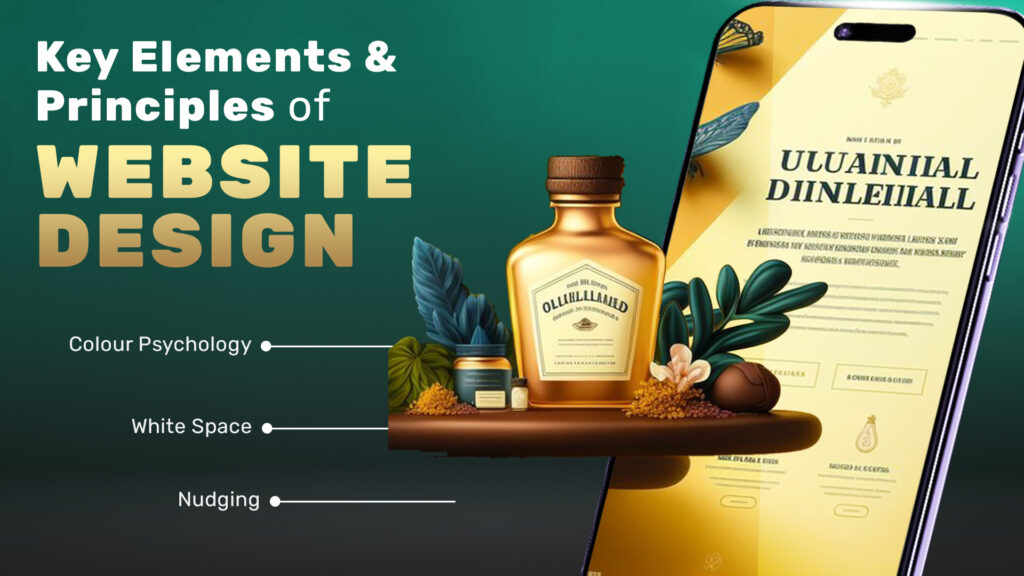
Key Elements and Principles of Website Design
A website’s success depends on several design principles. Mastering these elements will elevate your website from average to outstanding.
Color Psychology
Choosing the right color palette is essential for conveying your brand’s message and triggering emotional responses. For instance, blue often represents trust and reliability, while red signifies energy and urgency. Understanding color psychology can help guide visitors toward the desired actions, like clicking on a call-to-action button or filling out a contact form.
White Space
Also known as negative space, white space refers to the areas around and between elements on a page. White space enhances the overall design by improving readability and directing attention to key content. A clean layout with adequate white space feels uncluttered, helping users focus on what matters most.
Nudging
Nudging is a subtle technique used to encourage user behavior. Through strategic design, such as placing call-to-action buttons in prominent positions or using contrasting colors, you can nudge visitors toward completing desired actions like signing up for a newsletter or making a purchase.
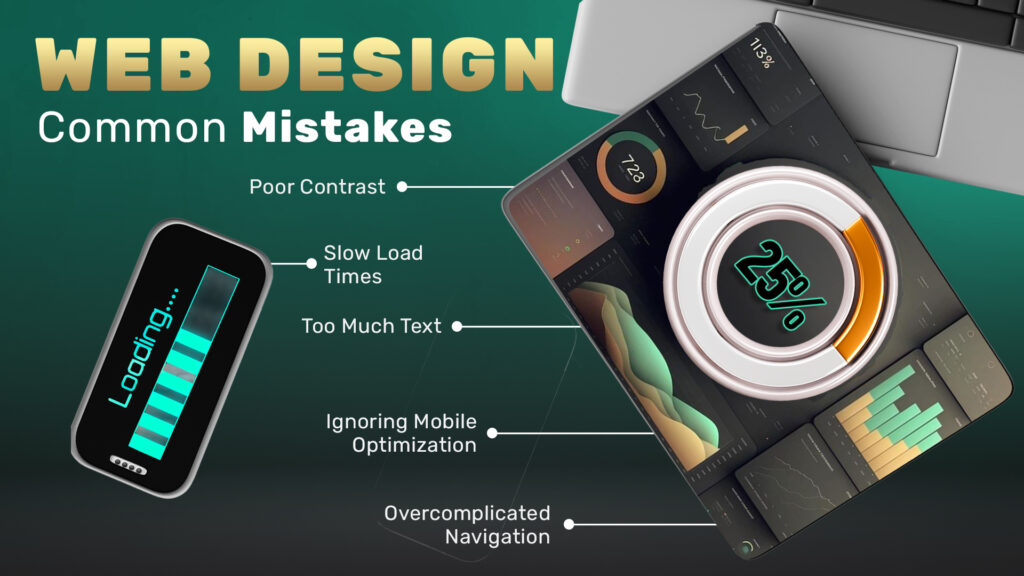
Web Design Common Mistakes
Even with the best intentions, it’s easy to make mistakes in web design that can negatively impact your site’s performance and user experience. Here are common pitfalls to avoid:
Overcomplicated Navigation
A complicated menu structure can confuse users and increase bounce rates. Keep your navigation simple, with clearly defined categories and subcategories. Dropdown menus should be used sparingly, and breadcrumbs can help guide users through more complex site hierarchies.
Slow Load Times
Heavy graphics, poorly optimized images, or unrefined code can slow your website down, frustrating users and damaging your SEO. Regularly test your site’s load speed and use tools to compress images, clean up code, and improve overall performance.
Ignoring Mobile Optimization
With mobile traffic overtake desktop usage, it’s essential that your site is fully responsive. A responsive design adapts to all screen sizes and ensures that the user experience remains consistent and seamless, whether viewed on a smartphone, tablet, or desktop.
Too Much Text
Dense blocks of text can overwhelm visitors and make your content harder to digest. Break up paragraphs into smaller sections, use bullet points, and incorporate visuals to make your content more engaging and readable.
Poor Contrast
Text should always be legible, regardless of the background color. Insufficient contrast can lead to readability issues, especially for users with visual impairments. Make sure there’s enough contrast between text and background elements, and consider accessibility when choosing your color schemes.
Conclusion
Crafting an impactful website requires more than just aesthetic appeal; it’s about creating an experience that is memorable, user-friendly, and aligned with your brand’s mission. The best websites combine visual allure with intuitive functionality, ensuring users can easily navigate, engage, and take action. From prioritizing responsive design and fast load times to understanding the nuances of color psychology and accessibility, each element plays a critical role in shaping a positive user experience.
By following core design principles and avoiding common pitfalls, you can build a website that not only looks stunning but also drives conversions and fosters trust. Keep in mind that web design is a dynamic field, constantly evolving with new trends, technologies, and user expectations. To stay relevant, continue exploring creative ideas, test innovative layouts, and gather feedback from real users.
Ultimately, a well-designed website becomes more than an online presence—it’s a powerful platform that builds connections, inspires action, and represents the heart of your brand in the digital world.




